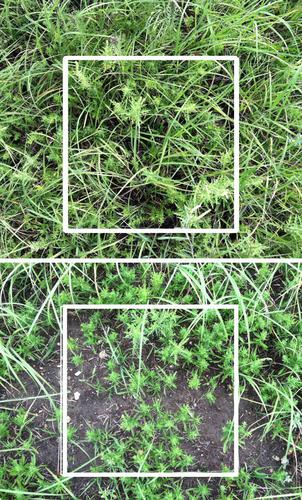Our official English website, www.x-mol.net, welcomes your
feedback! (Note: you will need to create a separate account there.)
Resources do not limit compensatory response of a tallgrass prairie plant community to the loss of a dominant species
Journal of Ecology ( IF 5.3 ) Pub Date : 2021-07-05 , DOI: 10.1111/1365-2745.13741 Francis A. Chaves 1 , Melinda D. Smith 1
中文翻译:

资源不会限制高草草原植物群落对优势物种丧失的补偿反应
更新日期:2021-07-05
Journal of Ecology ( IF 5.3 ) Pub Date : 2021-07-05 , DOI: 10.1111/1365-2745.13741 Francis A. Chaves 1 , Melinda D. Smith 1
Affiliation

|
- The effect of species loss on ecosystem productivity is determined by both the functional contribution of the species lost, and the response of the remaining species in the community. According to the mass ratio hypothesis, the loss of a dominant plant species, which has a larger proportionate contribution to productivity, is expected to exert an overwhelming effect on this important ecosystem function. However, via competitive release, loss of a dominant species can provide the opportunity for other plant species to establish, thrive and become abundant in the community, potentially compensating for the function lost. Furthermore, if resource limitation is removed, then the compensatory response of function to the loss of a dominant species should be greater and more rapid than if resources are more limiting.
- To evaluate how resources may limit compensation of above-ground productivity to the loss of a dominant plant species, we experimentally removed the C4 perennial tallgrass, Andropogon gerardii, from intact plant communities. We added water for 4 years, as well as nitrogen in the fourth year, to test the effect of resource limitation on the compensatory response.
- Overall, above-ground biomass production increased in the remaining community with both water and nitrogen addition. However, this increase in biomass production was not sufficient to fully compensate for the loss of A. gerardii, indicating water and nitrogen were not limiting short-term compensation in this community.
- Following the removal of the dominant species, there was reordering of species abundances in the community, rather than changes in species richness. The C4 grass Bouteloua curtipendula was the most responsive species, increasing by 57.9% in abundance with water addition and 91.0% with both water and nitrogen addition. Despite this dramatic increase in abundance, its short stature and lower per capita biomass production prevented this species from compensating for the loss of A. gerardii.
- Synthesis. Short-term compensation after the loss of a dominant plant species can be hastened by increased resource availability, but ultimately full compensation appears to be limited by the presence and abundance of species in the remaining community that possess traits that allow them compensate for the species lost.
中文翻译:

资源不会限制高草草原植物群落对优势物种丧失的补偿反应
- 物种丧失对生态系统生产力的影响取决于物种丧失的功能贡献和群落中剩余物种的响应。根据质量比假设,对生产力具有较大比例贡献的优势植物物种的丧失预计将对这一重要的生态系统功能产生压倒性的影响。然而,通过竞争性释放,优势物种的丧失可以为其他植物物种在群落中建立、繁衍和丰富提供机会,从而可能弥补丧失的功能。此外,如果取消了资源限制,那么与资源更加有限的情况相比,功能对优势物种丧失的补偿反应应该更大和更快。
- 为了评估资源如何限制地上生产力对优势植物物种丧失的补偿,我们通过实验从完整的植物群落中移除了 C 4多年生高草Andropogon gerardii。我们加水 4 年,第四年加氮,以测试资源限制对补偿反应的影响。
- 总体而言,随着水和氮的加入,其余社区的地上生物量产量增加。然而,这种生物量产量的增加不足以完全补偿A. gerardii的损失,表明水和氮不会限制该社区的短期补偿。
- 在去除优势物种后,群落中的物种丰度发生了重新排序,而不是物种丰富度的变化。C 4草Bouteloua curtipendula是最敏感的物种,加水增加了 57.9%,同时加水和加氮增加了 91.0%。尽管丰度急剧增加,但其身材矮小和人均生物量产量较低,使该物种无法弥补A. gerardii的损失。
- 合成。优势植物物种丧失后的短期补偿可以通过增加资源可用性来加速,但最终完全补偿似乎受到剩余群落中物种的存在和丰富程度的限制,这些物种具有使它们能够补偿失去的物种的特性.











































 京公网安备 11010802027423号
京公网安备 11010802027423号